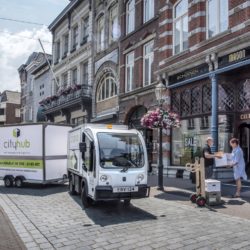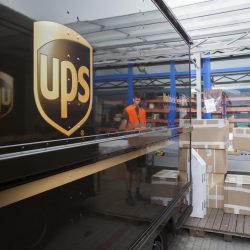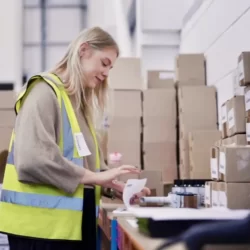Four scenarios for last-mile distribution

A city’s economic vitality and liveability depends on good urban logistics. The city distribution situation is partly determined by shifts in consumer behaviour and possible governmental regulation. Scenario planning helps companies to capitalize on future possibilities.
By Marysa Vos
Thinking about possible scenarios helps companies to anticipate various future situations that they could end up facing. LuckaBox, winner of the first European Supply Chain Start-up Contest, is active in cities, aims to offer convenience, is sustainable and operates in a regulated market. However, the explicit needs for city distribution can differ per city and country, resulting in multiple potential scenarios. Will city distribution remain a free market, or will the government regulate it? And is the local market dominated by the consumer need for convenience, or are customers looking for an experience? Combining several variants resulted in a detailed plan featuring four future scenarios.
1. Convenience according to rules
How does convenience relate to a regulated market? The answer is: convenience according to the rules. Now that it is so easy for consumers to place orders online, this is having a negative impact on the quality of life in the city. Despite the fact that some retailers promote ‘free’ delivery, the transport associated with e-commerce nevertheless has a price tag in the shape of congestion, accidents and pollution. The government is managing the phenomenon of e-commerce by regulating the delivery market in order to ensure the quality of life in the city. The permitted delivery times in the city are limited and infrastructure is in place facilitating central delivery and collection of parcels. The ‘social cost price’ per parcel is passed on to retailers or carriers in the form of taxation, resulting in increased delivery costs. Because consumers are keen to retain their convenience, they are prepared to pay for more sustainable deliveries. To reduce costs, a circular supply chain is the new norm in which reusable packaging is crucial. Products are delivered directly to the consumer in brand-specific and sustainable last-mile packaging which is collected again and returned to the supply chain.
2. Uber for everything
If the government does not take control directly by regulating the market, then a completely different picture of the future emerges. How does convenience relate to a free delivery market? The answer is an ‘Uber for everything’ scenario. The government is celebrating and embracing new business models. A sharing economy is the new standard in which online marketplaces, networks and platforms are the biggest players. Consumers are aware of the impact of e-commerce on the liveability of the city, but they do not always have the time, money or inclination to do anything about it. It is up to retailers to integrate the sharing economy into the value chain in order to respond to the new consumer behaviour. The consumer need for convenience dominates the market, and customers have come to expect to get what they want, when they want it. Every neighbourhood has its own delivery address and local residents become actively involved in getting the increasing number of parcels delivered to demanding consumers on time.
3. Experience comes first
Despite the tremendous convenience of ordering online, a large group of consumers are looking for new customer experiences and this makes them participants in the experience economy. The combination of an experience-oriented consumer in a free delivery market creates a market in which experience comes first. Whereas the initial trend was for traditional retailers to adapt and develop their online presence, several online retailers are now popping up with physical stores in the city to be able to participate offline in the experience economy. Online and offline are merging, resulting in ‘on-life’ consumers. The free delivery market means that companies can do pretty much what they want as they continuously look for new ways to meet the consumer need for experiences. It is as if the city has been transformed into a ‘retail fairground’ with a new attraction on every corner.
4. A surprise within frameworks
To prevent the city becoming overrun by delivery services and pop-up stores, the government is regulating the market. For the experience-oriented consumer, this creates a scenario of surprise within certain frameworks. The permitted delivery times in the city are limited and infrastructure is in place facilitating central delivery and collection of parcels. Because the consumer desire for experiences still dominates, it is up to retailers and delivery services to create them. The city’s shops have been transformed into true brand-experience centres which also serve as central hubs for the last mile. Fashion retailers provide personalized fitting rooms, both virtual and physical, tailored to the wishes of the consumer. Automatic advice on size, colour and the fit of garments helps to create a streamlined shopping experience for consumers. And when shoppers decide to purchase the goods, last-mile delivery players deliver the purchased items at a time and location of the consumer’s choice. It has become the norm to offer an outstanding and convenient customer experience.










